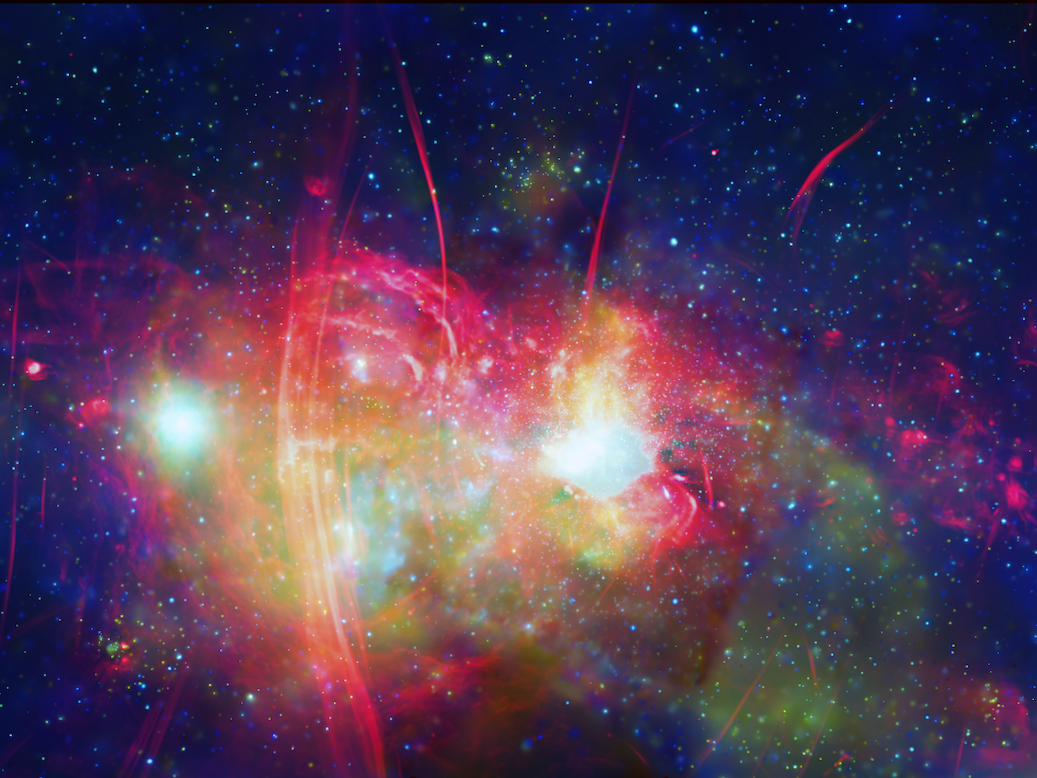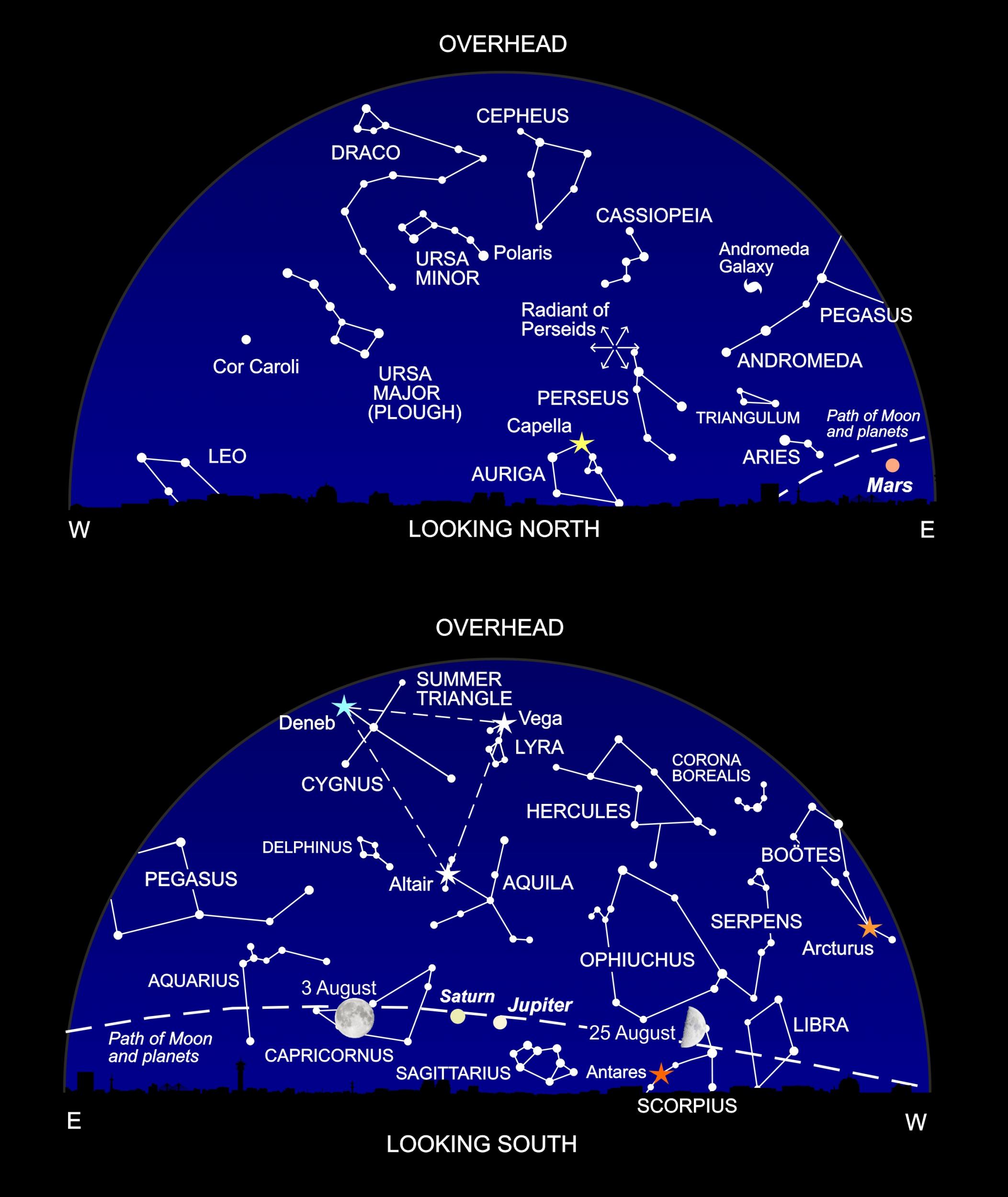Stargazing in August: Getting to the core of the Milky Way
Nigel Henbest on the celestial mystery at the centre of the Milky Way. Plus, what to look out for in the skies this month

Your support helps us to tell the story
From reproductive rights to climate change to Big Tech, The Independent is on the ground when the story is developing. Whether it's investigating the financials of Elon Musk's pro-Trump PAC or producing our latest documentary, 'The A Word', which shines a light on the American women fighting for reproductive rights, we know how important it is to parse out the facts from the messaging.
At such a critical moment in US history, we need reporters on the ground. Your donation allows us to keep sending journalists to speak to both sides of the story.
The Independent is trusted by Americans across the entire political spectrum. And unlike many other quality news outlets, we choose not to lock Americans out of our reporting and analysis with paywalls. We believe quality journalism should be available to everyone, paid for by those who can afford it.
Your support makes all the difference.Look south this month, and you can’t miss the two giants of the solar system, Jupiter and Saturn, outshining all the stars in their vicinity. And on a dark clear night – well away from streetlights – you’ll make out a misty glow rising from the horizon nearby. This is the Milky Way, the combined light of the billions of stars that make up our home galaxy.
To the right of Jupiter, among the stars of the teapot-shaped constellation of Sagittarius, you’re gazing towards the very centre of the Milky Way. And it’s the home to one of the galaxy’s greatest mysteries.
I’m afraid that a backyard telescope won’t reveal much more than your unaided eyes. Dense swathes of dust between us and the galactic centre dim whatever’s there to the point of invisibility. Even the Hubble Space Telescope can’t perceive the core of the Milky Way.
But if our eyes could see radiation that can penetrate the dust, we’d be treated to the astounding view in the main image above. As revealed by radio waves and X-rays, the core of the Milky Way is a maelstrom of activity. Something immensely powerful must be lurking in the galactic centre...
By studying infrared radiation that can slice through the dust in space, two rival teams of astronomers – working with the Keck Telescope in Hawaii and the Very Large Telescope in Chile – have proved what this beast must be. They have kept close tabs on the brightest stars at the galaxy’s heart, and found that they are speeding about under the influence of an immensely powerful gravitational force. One star here is the fastest object we know, hurtling around an unseen central object at 75 million kilometres per hour!
Such intense gravity can only be the work of an incredibly heavy black hole. And the two teams have independently worked out that it’s four million times more massive than our Sun.
This black hole isn’t sleeping. It’s actively swallowing up clouds of gas that wander too close, and it’s a messy eater. Some of its meal ends up as a ring of hot gas orbiting closely around its periphery, the event horizon. The maelstrom of energy shines brightly in radio waves.
Decades ago, radio astronomers picked up this object and called it Sagittarius A* (pronounced “A-star”). Now we are homing in what it actually looks like. Over the past few years, astronomers have linked together radio dishes ranging in location from Hawaii to Greenland and the South Pole, to create a mammoth instrument effectively as wide as the Earth.
This black hole isn’t sleeping. It’s actively swallowing up clouds of gas that wander too close, and it’s a messy eater
Last year, the Event Horizon Telescope team unveiled the stunning image of a black hole in the distant galaxy M87, weighing in at six billion suns. They have also been keeping a beady eye on Sagittarius A*, but the gas swirling around this less massive black hole is flickering, which makes their complex analysis of the observations more difficult. The galactic centre is only visible from all the telescopes, with favourable weather, in March and April, and the team missed the chance to observe it this year because several of the instruments were closed due to coronavirus restrictions.
Next spring, they should be up and running again, with two extra telescopes in Arizona and France. It will take some time to process the new data, but watch out for the first images of the mysterious heart of the Milky Way.
What’s Up
Just as we associate the sparkling stars of Orion, the great hunter, with the skies of winter, this month we have the emblem of summer high in the southern sky. It’s not a single constellation, but a shape demarcated by three brilliant stars that we call the Summer Triangle.
Brightest is Vega, the leading light of the tiny constellation of Lyra (the Lyre) which indeed resembles a small harp. To its left, you’ll find Deneb, the main star in Cygnus (the Swan) which marks, rather oddly, neither the bird’s head nor its heart, but the flying swan’s tail. Below them lies Altair, in another avian star pattern, Aquila (the Eagle).
There are even brighter lights to be found down on the southern horizon. More brilliant than any star is the giant planet Jupiter. Take a look through binoculars and you’ll see its four biggest moons, while a small telescope reveals the planet’s bands of clouds and the Great Red Spot, a mighty storm that’s been raging for centuries.

To Jupiter’s left lies fainter Saturn. A telescope will show you its famous rings, and the planet’s major companion, Titan, a moon so massive that it holds onto an atmosphere even denser than the Earth’s.
In the east, you can’t miss a reddish planet almost rivalling Jupiter in brightness. Mars rises about 11pm, and is growing noticeably brighter as the Earth speeds towards closest approach in a couple of months’ time.
Surpassing even all these bright planets is stunning Venus. The Morning Star rises about 2am in the east. Through a small telescope, you’ll see its shape change from crescent to a half-lit globe during August. If you have a clear view in that direction, look very close to the horizon – well to the lower left of Venus – and you catch a glimpse of the innermost planet, Mercury, rising just before the Sun.
We’re treated to one of the year’s best displays of shooting stars on 12 August, when the Perseid meteor shower reaches its peak. The meteors are particles from Comet Swift-Tuttle, burning up as they impact the atmosphere far above our heads, and they seem to stream outwards from the constellation Perseus. You’ll see them all night, but bright moonlight will wash out the fainter meteors after midnight, when the shower is most prolific.
Diary
8 August: Moon near Mars
11 August, 5.44pm: Last Quarter Moon
12 August: maximum of Perseid meteor shower
13 August: Venus at greatest western elongation
15 August (am): Moon near Venus
16 August (am): Moon near Venus
19 August, 3.41am: New Moon
22 August: Moon near Spica
25 August, 6.57pm: First Quarter Moon near Antares
26 August: Moon near Antares
28 August: Moon near Jupiter
29 August: Moon near Saturn
Philip’s 2020 Stargazing (Philip’s £6.99) by Heather Couper and Nigel Henbest reveals everything that’s going on in the sky this year.
Fully illustrated, Heather and Nigel’s The Universe Explained (Firefly, £16.99) is packed with 185 of the questions that people ask about the Cosmos.
Join our commenting forum
Join thought-provoking conversations, follow other Independent readers and see their replies
Comments